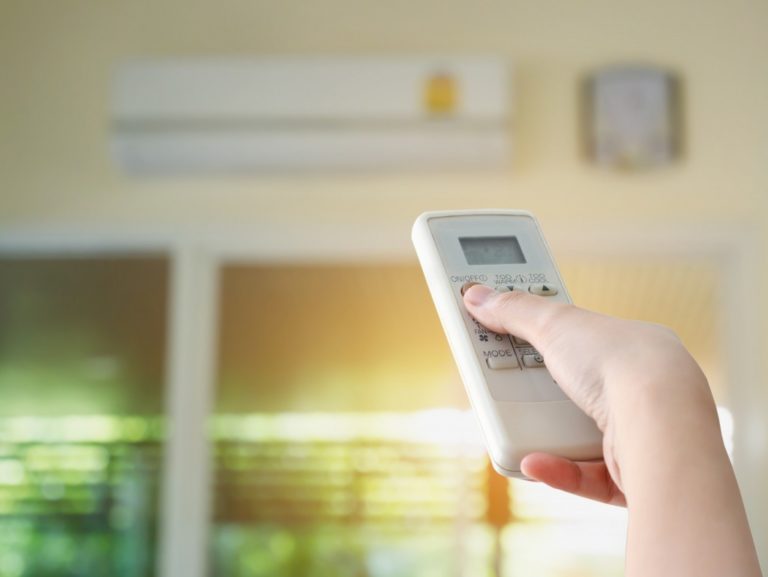Experts are forecasting that the United States will be experiencing severe summer heat this year. As of April this year, the National Oceanic and Atmospheric Administration (NOAA) reported an average temperature in the contiguous U.S. of 51.9 degrees Fahrenheit. This is nine degrees more than the 20th-century average.
Last year’s summer was already hot. According to the World Meteorological Organization (WMO), the hottest known temperature measured reliably worldwide occurred in Death Valley, California, on August 16, 2020, at 54.4 degrees Celsius or 130 degrees Fahrenheit.
Drought, Threatened Water Supply, and Possible Wildfires
Drought accompanies the severely hot weather. NOAA reports that in April, rainfall was 2.03 inches in the contiguous U.S. This is 0.49 inches lower than the average, making this the thirstiest April since 1989 and 14th for the past 127 recorded years. The U.S. Drought Monitor (USDM) announced that as of March 23, 2021, almost half of the country was in various levels of drought, up to exceptional drought.
The country’s water supply is in peril because of the drought. The contents of the nation’s water reservoirs are well below average. The Conversation reports that the U.S. Bureau of Reclamation is cutting off water supplying farms on the Oregon-California border due to lack of water. It also warned of a possible federal water shortage declaration restricting water use if the Lake Mead reservoir levels fall in June. This reservoir on the Colorado River supplies water to millions of people. California announced a drought emergency in 41 of its 58 counties.
Heat and drought are prime conditions for wildfires. Experts worry that heat and lack of water will lead to extensive tree deaths that will further fuel wildfires. Federal fire officials anticipate “extremely active” wildfires this year. Last year, 10.1 million acres of land burned in 58,950 wildfires representing the second-largest acreage affected by wildfire since 1960, according to the National Interagency Coordination Center (NICC).
Health Risks and Precautions Against Extremely Hot Weather

Ready.gov warns that severely high temperatures can lead to heat cramps, heat exhaustion, and heatstroke. Cramps affect the stomach, arms, or legs. In heat exhaustion, there is also paleness, heavy sweating, headache, dizziness, tiredness, weakness, nausea, vomiting, and fainting.
In both conditions, bring the person to a cooler place, remove excess clothing, give a drink of cool water with salt and sugar or sports water, and cooled down with a wet cloth. If the person is able, administer a cool bath. If both conditions last more than an hour or worsen, call for medical help.
In heatstroke, the oral temperature is above 103 degrees Fahrenheit or 39.4 degrees Celsius; skin is dry, hot, and red with no sweat; the pulse is strong and rapid; and the person is dizzy, confused, or unconscious. Bring the person to the hospital immediately. While waiting for the ambulance or along the way, cool down the person by dousing with cool water.
To avoid the health risks from severe heat, keep the temperature in the home cool by installing an air conditioner and having a reliable air conditioner repair service on call. Install an attic ventilator to pull out hot air from the house. Clean and maintain the equipment to ensure that these do not break down during the hottest months. Insulate your home against heat, weather-strip windows and doors, and use heat-repelling curtains or blinds. Outside the windows, put up reflectors like cardboard covered in aluminum foil.
When the weather is scorching, people must take cool baths or showers, drink plenty of fluids, stay away from the sun, seek shade when outdoors, and preferably stay indoors in air-conditioned environments. Clothing must be light-colored, lightweight, loose, and cool. Masks must be snug but breathable. Watch more vulnerable individuals like the elderly, pregnant women, young children, infants, people with obesity, and those who are ill closely.
Health Risks and Precautions Against Wildfires
Apart from the loss of lives and property, wildfires also produce smoke and ash that affect air quality for miles away and even after the wildfire ends. According to the Centers for Disease Control and Prevention (CDC), this can cause respiratory and cardiovascular illnesses, including respiratory infections, bronchitis, asthma, chest pain, and chronic obstructive pulmonary disease (COPD). These can also irritate the eyes, nose, and skin.
Ready.gov advises people who live in areas at risk for wildfires to use fire-resistant materials in building a home. It is crucial to create a fire-resistant zone without flammable materials, leaves, or debris 30 feet around the home.
The CDC reminds people to prepare an evacuation plan with several alternative routes and shelter locations and to practice these plans. If there is no need to evacuate, close doors and windows when the air is smoky; and have a portable air cleaner indoors. Use high-efficiency filters in the air conditioning system to capture fine smoke particles and close the air intake damper from outside.
During the cleanup of ash after a wildfire, the CDC advises people to wear an N95 respirator, goggles, gloves, long-sleeved tops, long pants, socks, and shoes as protection. Children and vulnerable people must not take part in the cleanup.
Keep Calm and Stay Cool
Unless you can move to cooler climes, you must prepare your home and family for the coming hot months. This is no longer a matter of convenience but a health and safety issue, as well.
Be attentive to weather forecasts and warnings. With the current state of the country’s water supply, it is also a must to save water.

